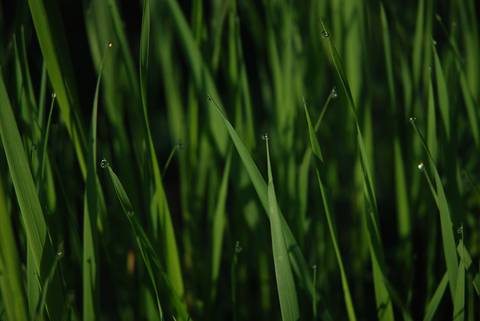When it comes to lemongrass essential oil, there are numerous misconceptions that need to be cleared up. This post is designed to give you the facts pertaining to lemongrass and lemongrass essential oil.
Misconceptions about lemongrass essential oil
- Lemongrass is the same as citronella – False. Citronella oil comes from Cymbopogon nardus or Cymbopogon winteratus. Lemongrass essential oil comes from the grasses Cymbopogon citratus or Cymbopogon flexuosus. The main difference between the two is primarily geographic. At best you might say that citronella oil and lemongrass essential oil are cousins.
- All lemongrass essential oil is the same – False. The constituents of the plants will vary depending on where it is grown and the growing environment. The only way to tell is to test the lemongrass essential oil.
- Lemongrass will cure cancer – Unknown. There have been studies that indicate lemongrass shows promise. However, anyone attempting to use lemongrass essential oil or lemongrass tea as a treatment for cancer should clear its use with his or her oncologist first. It is contraindicated for use with certain chemotherapy drugs.
- There is a therapeutic grade lemongrass essential oil – False. There is pure lemongrass essential oil and no such recognized thing as “therapeutic” grade.
- The Essential Oils Desk Reverence lists the following benefits associated with lemongrass essential oil: antifungal, antibacterial, anti-parasitic, anti-inflammatory, regenerates connective tissues and ligaments, dilates blood vessels, improves circulation and promotes lymph flow. To date, there is insufficient scientific evidence to substantiate these claims with the exception of its antibacterial characteristic.
What you take to the bank about lemongrass and lemongrass essential oil
- Lemongrass is used as a flavoring in many foods and is a favorite in Thai dishes. It is also used in making perfumes.
- Lemongrass essential oil has antiseptic properties
- Lemongrass essential oil should be used with caution when used in cosmetic products.
- C. flexuosus has a higher citral concentration than C. citratus (the type we carry). Citral is a known skin irritant.
- C. citratus has a higher myrcene level which should make it less irritating in that it lowers the citral levels to the skin. Higher concentrations of myrcene increase the antibacterial action of the lemongrass essential oil.
- Lemongrass essential oil is soothing to the nerves while also being invigorating.
- Lemongrass is made into a tea which supposedly helps with gastrointestinal problems, however, though this hasn’t been given rigorous scientific scrutiny, it is a common use in folk medicine.
- Lemongrass essential oil blends well with Bergamot, Cedarwood, Geranium, Lemon, Neroli, Palma Rosa, Petitgrain, Rosemary and Tea Tree.
I could go more deeply into the chemical constituents of lemongrass essential oils and load you down with details, but I thought that might bore you. For that reason, I’ve left it out of this post. If you’re interested, send us an e-mail and we’ll delve into that for you. Instead, I’ve included a nice little room spray recipe for you to try. Let me know how you like it.
Lemongrass essential oil room spray
Ingredients:
- 1/4 cup unflavored vodka
- 20 drops lemongrass essential oil
- 10 drops geranium essential oil
- 3 cups water
Instructions:
Pour ingredients into spray bottle and shake well.
Note: Avoid spraying on furniture because it can stain. Don’t spray on your skin or into food and beverages.
There, now you can add lemongrass to your collection of essential oils. In future posts you will see it pop up again in recipes. Below are other related posts you may find useful.
Now go have fun and relax.
Related posts:
The Difference Between Essential Oils and Fragrance Oils

